Gloxinia (Sinningia speciosa), commonly known as Brazilian Gloxinia, Bright Eyes, Florist’s Gloxinia, Violet Slipper Gloxinia, or simply Gloxinia, is a vibrant and captivating plant from the family Gesneriaceae and genus Sinningia. Native to Brazil, this plant is typically grown as an annual but can also thrive as a perennial under suitable conditions.
Gloxinia grows to a height of 15–30 cm and features soft, velvety foliage that adds to its ornamental appeal. During summer, it produces striking, ruffled, bell-shaped flowers in a variety of colors, including blue, purple, pink, red, and white. These stunning blooms not only beautify indoor spaces but also attract hummingbirds and butterflies when grown outdoors.
This adaptable plant thrives in filtered light, full sun, or partial shade, making it a popular choice for both indoor cultivation and outdoor display during the warmer months.
| Common name | Brazilian Gloxinia, Bright Eyes, Florist’s Gloxinia, Gloxina, Gloxinia, Violet Slipper Gloxinia |
| Botanical name | Sinningia speciosa |
| Family | Gesneriaceae |
| Genus | Sinningia |
| Species | speciosa |
| Origin | Brazil |
| Life cycle | Annual |
| Plant type | Houseplant |
| Hardiness zone | 10, 11 |
| Sunlight | Dappled Sunlight |
| Maintenance | High |
| Soil ph | Acid |
| Drainage | Well-Drained |
| Growth rate | Medium |
| Spacing | Less than 12 in. |
| Flowering period | Spring |
| Height | 6 in. – 1 ft. |
| Flower color | Gold, Yellow |
| Leaf color | Green |
| Leaf benefit | Showy |
| Flower benefit | Long Bloom Season |
| Garden style | Cottage Garden |
| Uses | Container |
I. Appearance and Characteristics
Sinningia speciosa, sometimes known in the horticultural trade as gloxinia, is a tuberous member of the flowering plant native to Brazil within the family Gesneriaceae. Originally included in the genus Gloxinia in 1817, it was reclassified to Sinningia. Showy S. speciosa hybrids are still sometimes referred to simply as “gloxinia”, although this name is now technically incorrect.
The name florist’s gloxinia is now sometimes used to distinguish it from the rhizomatous species now included in the genus Gloxinia. Another common name is Brazilian gloxinia.
These plants have huge, soft, dark green leaves that remind you of African Violets or Wild Violets because of their large bell shape.
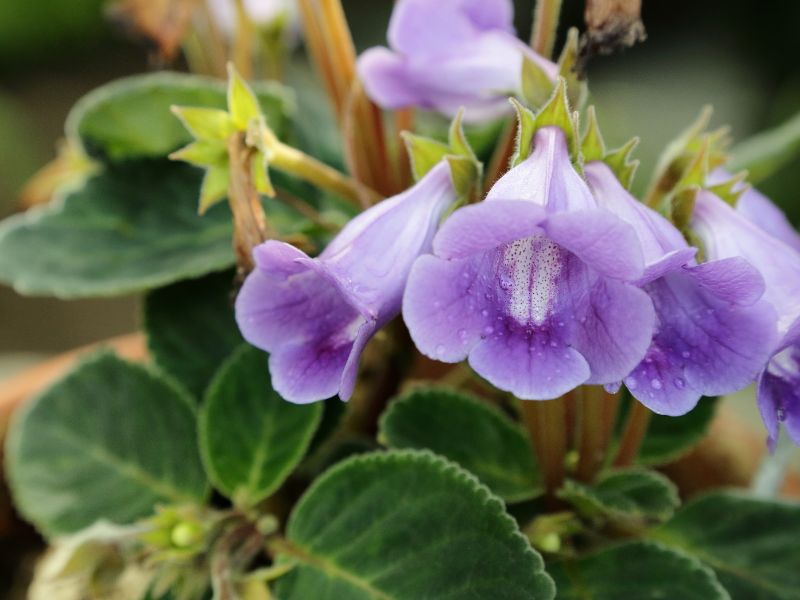
The leaves also have a fuzzy texture with an oblong shape, and they’re toothed as well.
Gloxinias also come in a beautiful array of colors such as blue, red, pink, and purple. Sometimes they even have white spots or fringes as well. You can get them as single or double flowers, and they make excellent staple pieces in the home as a centerpiece for your table or an elegant windowsill plant.
Gloxinia is a flowering plant from the tropical region of Brazil. The plant’s flowers can grow close to two inches long sitting atop the leaves that can get as long as six inches. These hybrids tend to stay compact and small, only averaging between six and ten inches in length. The spread is also equal.
This factor makes for easy portability whether you want to keep them indoors or move them around to different places in your yard or garden.
Cultural requirements are similar to those of African violets except that S. speciosa generally requires more light and often has a dormant period, when the tuber should be kept cool and dry until it resprouts.
II. How to Grow and Care
Sunlight
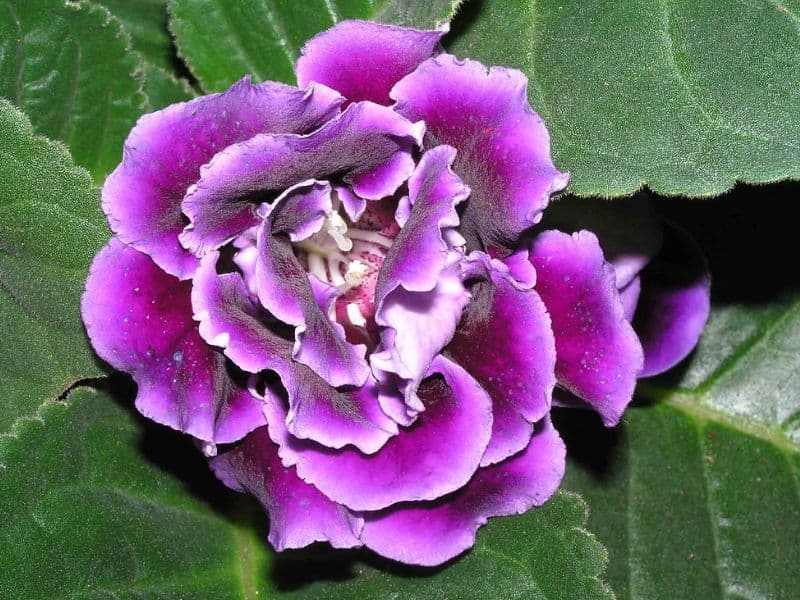
The gloxinia plant does not thrive under direct light. You should not expose your plant to direct sunlight, or else you will dry out its leaves and thus decrease its lifespan.
Your plant should be in a bright spot where there is indirect sunlight. If you grow your gloxinia plant indoors, try to regulate the temperatures and keep it between 60-75 degrees Fahrenheit; that’s 16-24 degrees Celsius.
Temperature and Humidity
Dry heat is a big no for these plants, as they should be in more humid environments, hovering between 70 and 78 degrees Fahrenheit. To boost the humidity around your plant, spray a light mist on the roots or stems.
Remember that spraying the leaves will cause discoloration, diseases, and even fungal growth. You might also want to consider purchasing a humidifier to assist with the humidity levels if spraying seems tedious.
Watering
The gloxinia plant cannot tolerate conditions that are too dry or too wet.
You have to constantly monitor the moisture levels and irrigation to keep the plant productive and healthy. Try these helpful tips:
- Every two or three days, you need to feel around the base of your plant to check the soil. Only water the gloxinia when the soil seems dry beyond a half-inch.
- Use lukewarm water and pour it into a shallow dish, sitting it under the gloxinia pot when you’re trying to irrigate plants you’re growing in the container. The soil will absorb the hydration through the holes in the bottom of the pot. Eventually, the soil will become moist at the top after around thirty minutes. You can then remove the water dish.
- For outdoor gloxinias, you will also use lukewarm water and pour it into the soil directly instead of letting the soil absorb the water like with the potted plant. Make sure that you keep the leaves dry during this process. The first six inches of soil should be moist once you’re finished.
- Use an organic fertilizer when the dormancy period is over and the bloom is about to restart. Choose a soluble, low-nitrogen fertilizer at half strength. Using too much nitrogen causes the flower petals to suffer, even if it makes the leaves lusher.
Soil
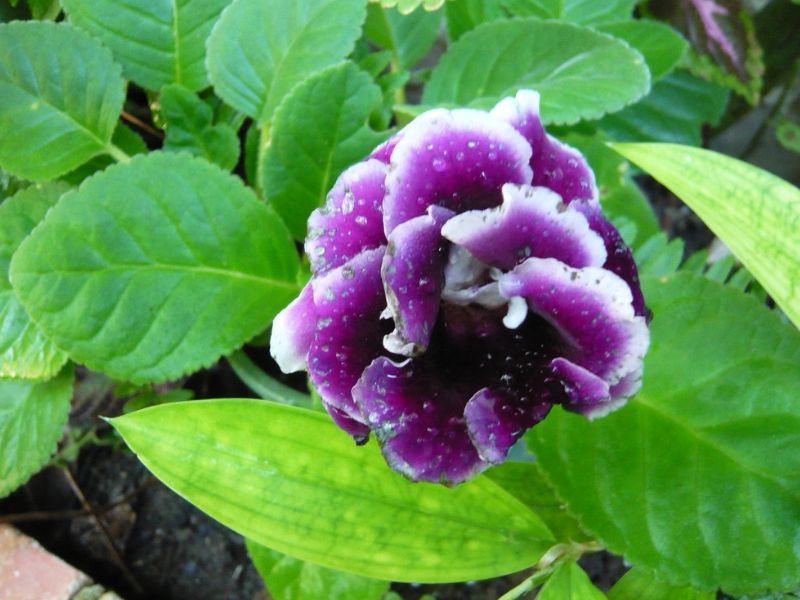
If you decide to repot your plant once the bloom is over, scale back the watering, allow the leaves to die, and then move the plant to a new pot. You can start the watering process again once it has sprouted.
Make sure you use a somewhat acidic potting mix that’s well-draining and loose. An African Violet soil mix is an optimal choice.
Fertilizing
Use peat-lite fertilizers with your gloxinia plant, and swap them out with a calcium nitrate fertilizer every once in a while. You can try controlled-release plant food as well. They will contain vital vitamins and nutrients for your gloxinias.
Don’t overdo it with the fertilizer because it can cause cupped, bluish-green, or curled foliage. If the leaves are yellow, that means there’s a deficiency, and you aren’t giving the gloxinia enough fertilizer. Reduce fertilizer use in the dormant phase.
Pruning
To prune your gloxinia, snip off the spent flowers from the bottom of the stem. Be careful around the leaves in this area because you can easily damage them. If the plant is new, take off the healthy stem, and make a little cut on it at 45 degrees.
Next, stick the healthy stem into a porous potting soil mix and light. It will suffer rot if the soil is too wet. Put this new pot in an area that’s cool and bright, away from direct sunlight. You won’t be able to move the new plant for four to five months.
Make sure you watch out for insects and keep the plant in an organized and clean space.
Propagation
It’s possible to propagate by seeds, stem cuttings, leaf cuttings, and tubers. Spring plantings are the only ideal situation for tubers; moreover, plants from tubers are in flower after four months.
Making flowering plants from seeds will take about six months; the time depends on the seasons at play. For example, gloxinias grow much faster in the summer than in the winter.
Interestingly enough, plants that have been grown from seeds have shorter internodes. Internodes refer to the area of a stem between the points where the leaf attaches. That results in a more attractive and compact aesthetic.
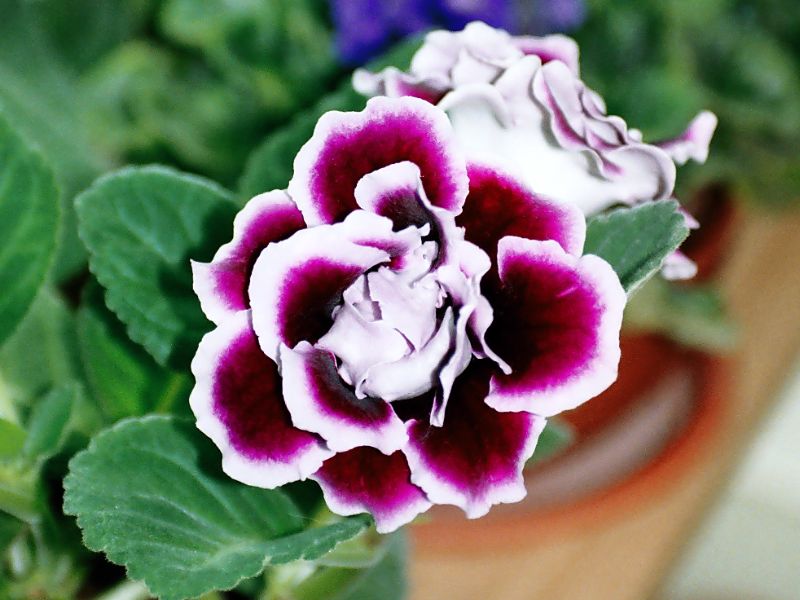
Growing Media: Gloxinias will respond best to a mix that has 50 percent sifted peat. Use a sieve with quarter-inch openings. The remainder of the mixture should be coarse sand, a little vermiculite, and perlite. The pH level should be 5.5 to 6.5.
Potting a tuber requires you to make sure the hollow part is on the top and very near the upper surface of the mix. Delicately pack the soil around the tuber and water generously many times. Remember, never pack any growing medium when wet.
From seeds
The first thing to take note of is the fact that these seeds are tiny and fine. Be attentive when opening the seed packet.
When growing your Sinningia Speciosa seeds, begin sowing them from December until February. This is necessary because it will take approximately six months to bloom.
Fully grown gloxinias on display at your local garden center are astonishing and worth their price. However, growing them from seeds is always a viable option if you wish to save some money.
Gardeners doing this must remember that the roots are delicate and that the plant can be challenging to transfer to a larger container. It’s recommended to sow the seeds in a 4 to 6-inch pot to give it room to mature into full size.
Planting Seeds
Procure some African violet potting soil and fill the pot to approximately 1 1/2 inches. Using a screen, sift an additional 1/2 inch of soil on top of the pot. This method ensures that the delicate roots won’t have trouble through the soil when the seeds germinate.
Before pressing the seeds gently onto the soil’s surface, be sure that you moisten the soil. Don’t bury the seeds as they need light to germinate.
Take the pot and place it in a plastic bag. Seal the top to allow the air to be humid and the soil moist. Keep the surrounding temperatures at about 75°F in a light place, however not in direct sunlight.
Plant Growth
Within about a month or so, your seedlings will develop two pairs of leaves. Each seedling should be placed into a 4-inch pot. This can be done by gently digging around the plant with a fork and removing each tuber along with its roots.
In approximately three to four days, the seeds will germinate. At soon as you notice this, open the bag and completely remove it for a week. If you discover that the soil looks and feels dry, be sure to mist the soil.
Potting and Repotting
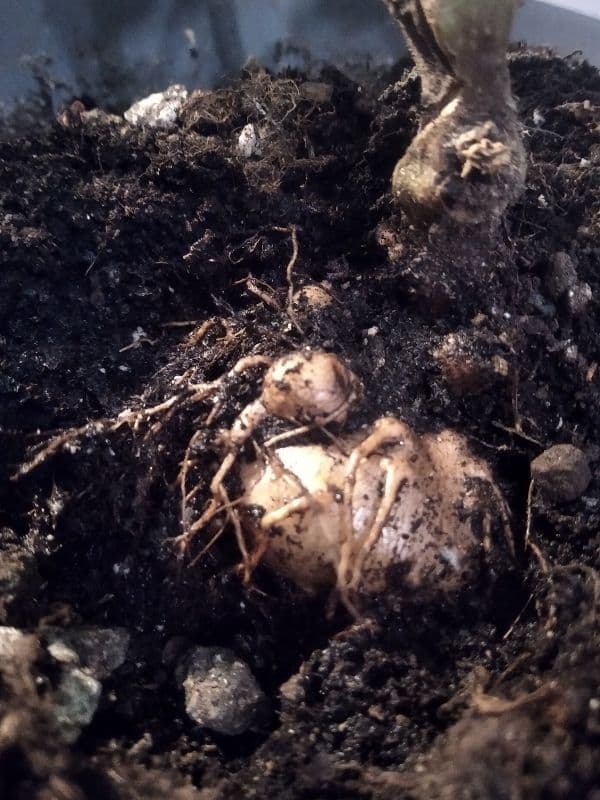
Repotting the gloxinia should not be performed during the growing season. Moreover, repotting should be done at the end of winter when the year’s growing season is complete.
When you go to repot, place the tuber into a slightly bigger pot with slightly acidic soil that’s fresh and continue watering. Soon after, leaves will sprout from the tuber, and the plant will grow continuously until it flowers once again. Keep in mind that flowering can happen at any time of the year.
Pests and Diseases
The gloxinia is very fragile and sensitive to water on its leaves and a lack of airflow. These two factors can cause it to rot. Furthermore, do not leave a gloxinia in any sitting water for any considerable amount of time; doing so will cause tuber rot. However, there’s a delicate balance to strike because a plant that is too dry will roll up its leaves.
This plant is vulnerable to whiteflies, scale, mealybugs, and aphids. Make sure to remove any infected plants from other houseplants and dispose of them. Refrain from using insecticides and sprays as they are likely to ruin the delicate blooms.
The Sinningia Speciosa is a bit more involved than a typical plant because it’s sensitive to changes in temperature and quantities of water. As a result, many different problems can develop. If you have them in your garden, it can be helpful to keep certain species of birds around.
- Growing Problems
There are an array of issues that this plant may suffer from. Here are the main issues owners of gloxinia may notice as well as what is causing them.
Buds turned black and died: This can happen as a lack of micronutrients and too few daylight hours.
The tuber hasn’t formed: This occurs when attempting to plant very long stem cuttings. Another reason could be that the cuttings were planted deeply and watered in excess.
Lead redness: There’s a phosphorus deficiency present.
Leaf discoloration: There’s not enough magnesium.
Yellow leaves: Excessive water or a lack of nitrogen can cause this discoloration.
Leaf curl: The humidity may be insufficient.
Twisting flowers: This slows down the plant’s growth, and it happens when the temperature is below 15 degrees.
Spotting: Brown and yellow spots may develop due to drafts, bright lighting, or cold irrigation water.
Torsion of leaf edges: The torsion bending of leaf edges results from excessive moisture within the soil.
The plant refuses to bloom: This can happen due to dry or cold air, not enough nutrition, insufficient lighting, poor maintenance during the dormant stage, and too many nitrogenous fertilizers.
Rotting petioles and buds: This happens because of excess nitrogen fertilizers, excess acidity in the soil, and excess moistening of the soil.
- Common Diseases
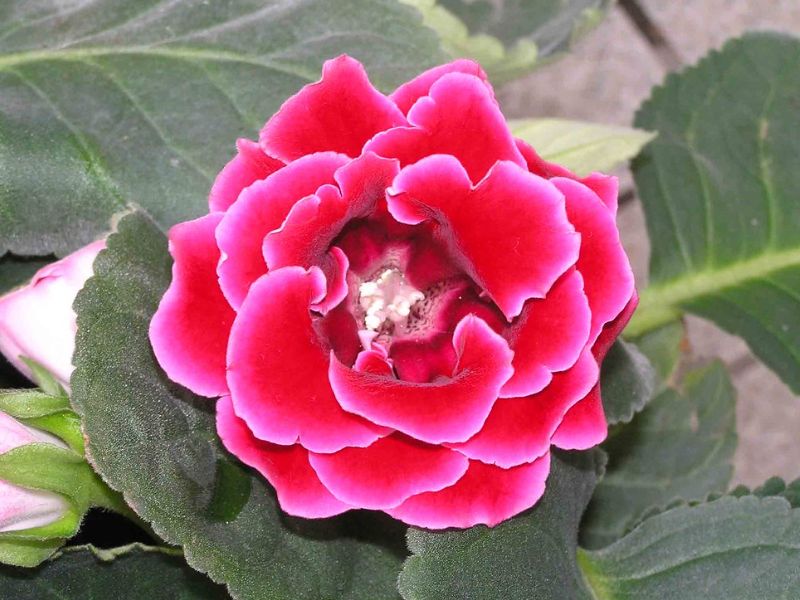
Below are some possible diseases you may run into with your Gloxinia:
Late Blight
This disease develops very quickly and leads to the rapid and sudden death of the gloxinia plant. Slight wilting is the sign of the beginner stages. Next are color changes, and the growth of the stem ceases.
Even after watering the plant, the leaves continue to fade away further, and the base of the stem starts rotting. This rotting passes on to the stalks and the leaves. Do not attempt to keep such a plant. The plant has to be disposed of, even the land.
Tuber Rotation
This disease happens when the plant is watered to excess. In the early stage of the disease rears its head in the form of a decrease in leaf turgor, and after irrigation, the turgor will not return. After severe tuber damage, the plant will wilt completely.
Wilt Virus
If your plant begins to develop brown rings, it may be infected with the spotted wilt virus.
This virus is transmitted via the western flower thrips and is unfortunately incurable. This means that you will have to dispose of your infected gloxinia straightaway. Keeping an infected gloxinia can result in it being attacked by whiteflies and mites, which may be even tougher to control.
Phytophthora Crown Rot
The roots of the Gloxinias are susceptible to diseases such as Phytophthora Crown Rot. The pathogens of the illness infect the root crown of your plant and will then spread to the leaf blade.
Water-soaked dark brown roots are an alarming sign of the disease. Furthermore, the reddening and purpling of older leaves are all signs you should look out for. Sadly, even young plants will die quickly from this disease.
To deal with this disorder, you must destroy all of the plants as soon as possible to prevent the spreading of the disease. Never propagate using infected plants; however, you can use them as compost.
Fusarium
This occurs when the soil has contaminated the plant. The leaves will curl, fade and turn brown. You’ll find dark cracks and stripes forming on the stem. Irrigating the plants too much, along with excess moisture, facilitates the growth of fusarium plants.
Boron Deficiency
Boron is pivotal in many plant functions, such as reproductive growth. The most prevalent symptom of boron deficiency is the sudden appearance of dark spots at the leaf base of the plant.
The spots are black or dark brown. As time passes, spots can begin to spread up to the flower stalks and leaf blades of your gloxinias. At worst, your gloxinia can wilt and die because of boron deficiency.
To treat boron deficiency, simply supply your plant with boron. Do this by putting boron in the soil directly, through fertigation or a foliar spray. Moreover, you can mix boron with other fertilizers and put it into the ground before planting.
Find Where to Buy the Best Gloxinia (Sinningia speciosa)
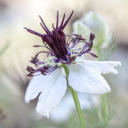




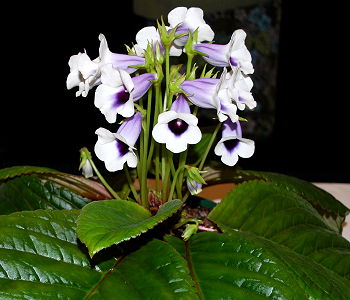

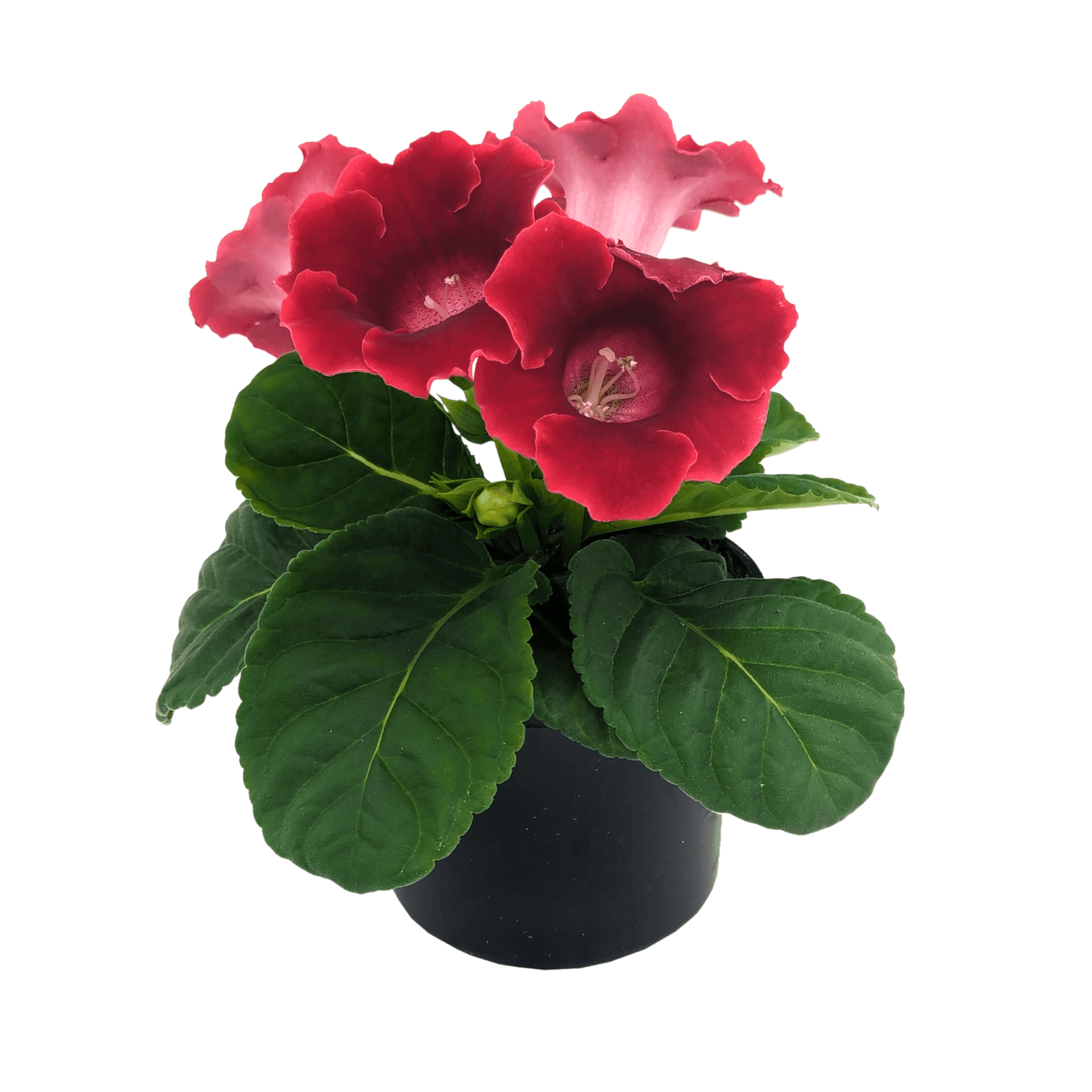
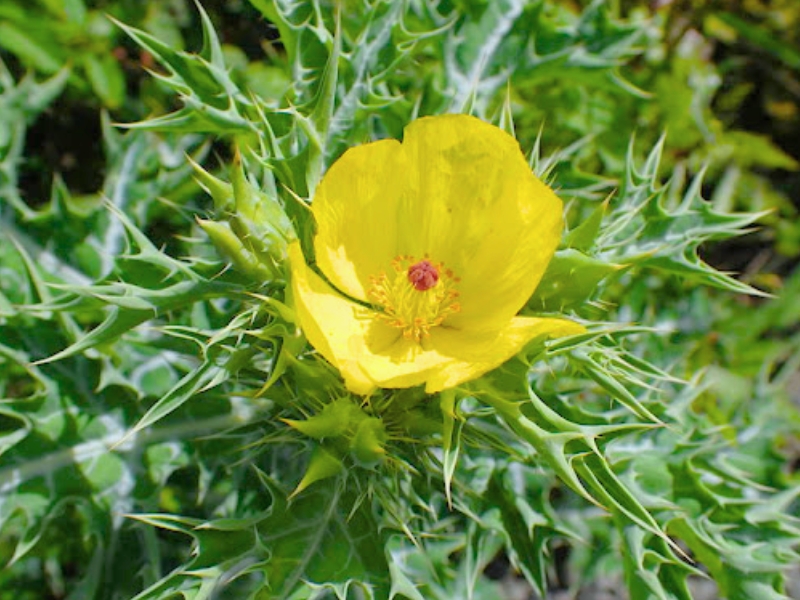
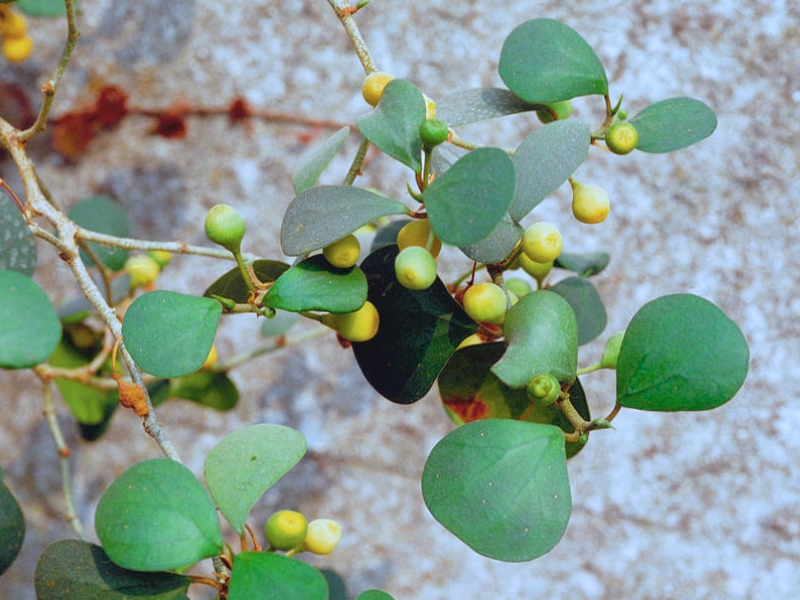
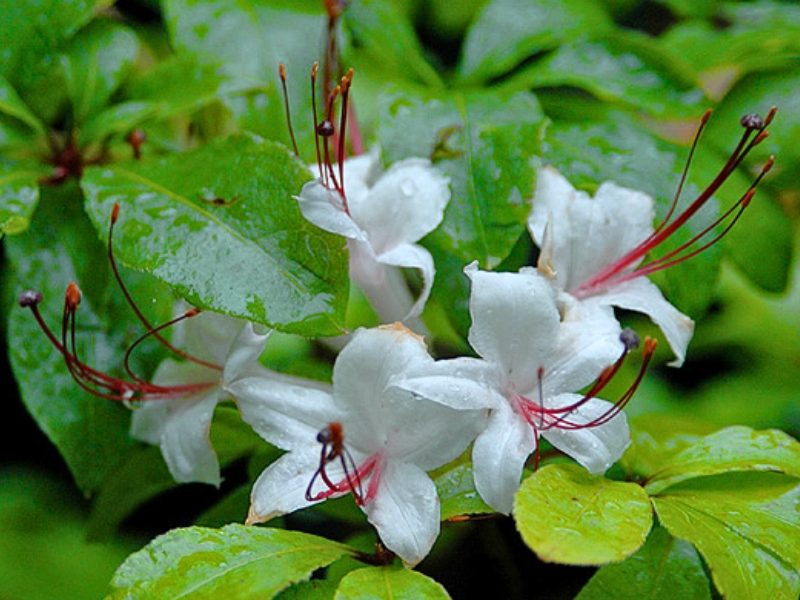
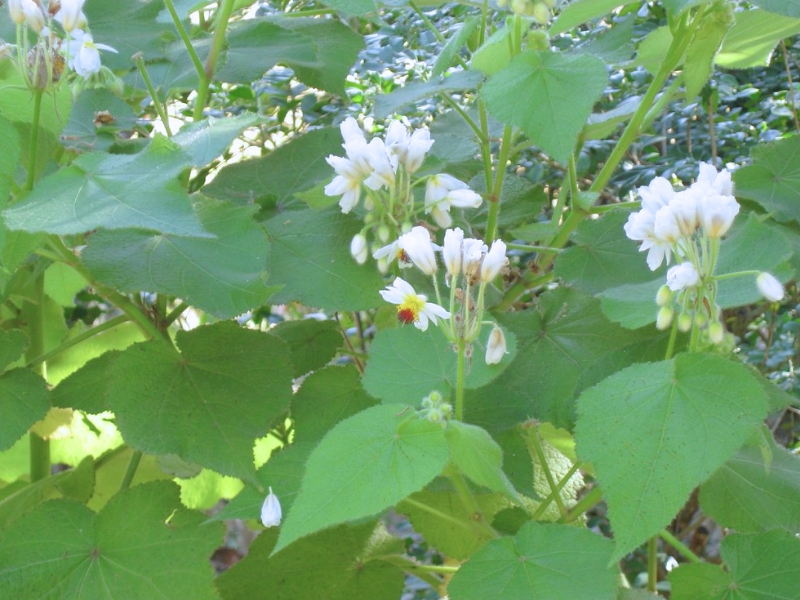
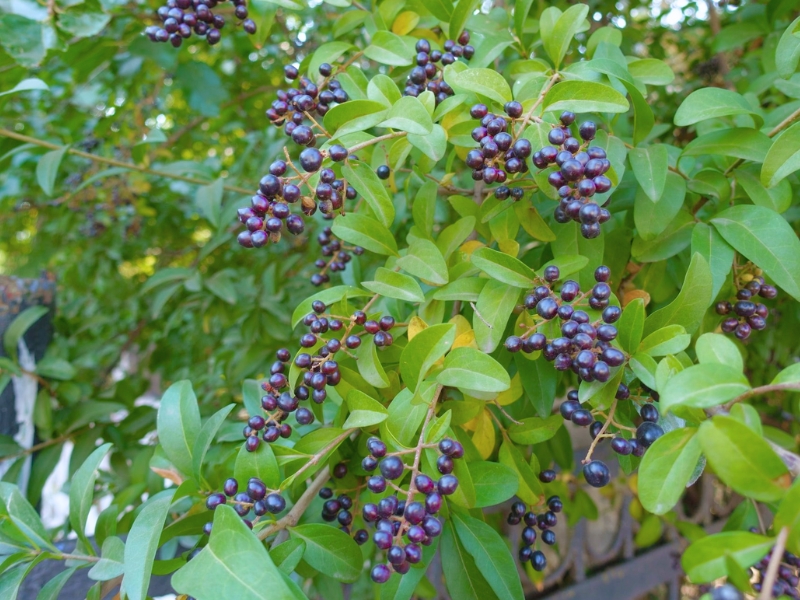
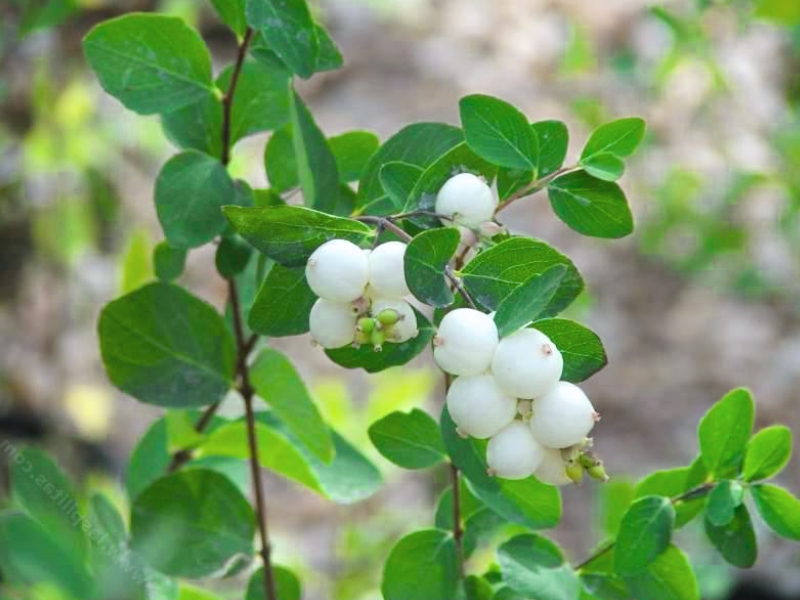
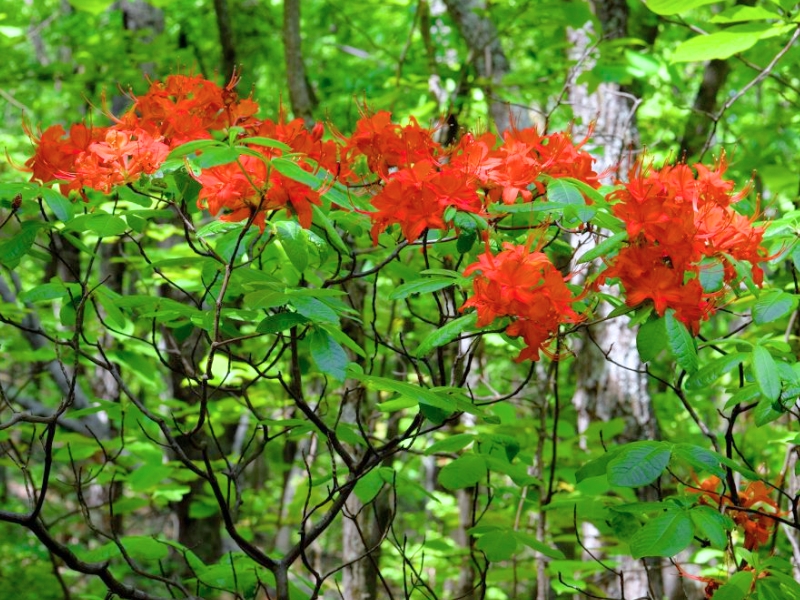
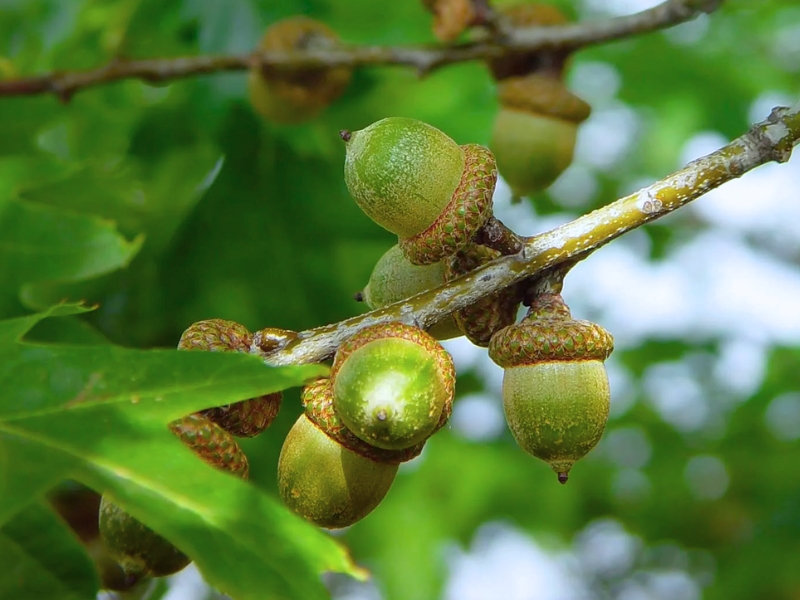
Leave a Reply